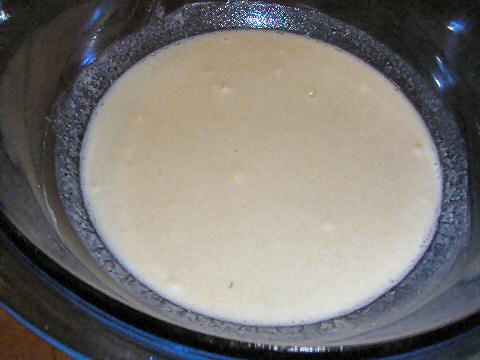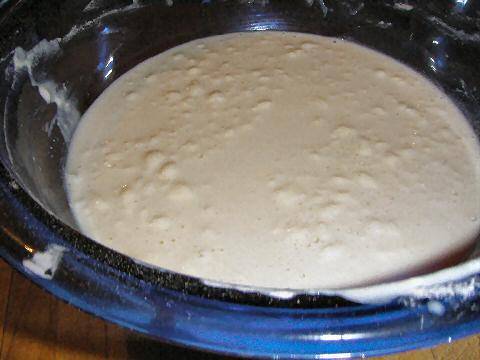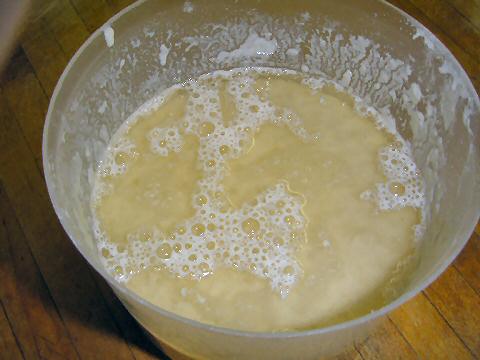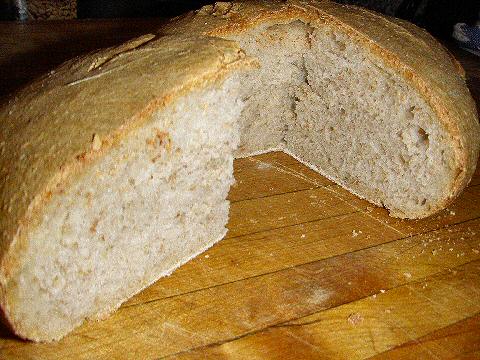Some “Light” Reading?
“Cooking Light is America’s recipe for healthy living, dedicated to helping readers eat better, feel better and look their best. Each issue celebrates light cuisine via more than 75 kitchen tested, beautifully photographed recipes. Our editorial focus is to provide fitness from a common sense angle as well as a reachable/user friendly exploration of delicious better-for-you food. Our mission is to be embraced by readers as a part of their daily rhythm; our goal is to help each individual reader keep a better lifestyle balance. (Eat smart. Be fit. Live well.)”
– Mission Statement from Cooking Light magazine
Through a very round-a-bout process (which took them from Alabama to New York to Oregon to California to Uruguay and then I picked them up there while visiting the friend who’d snagged them in California), I recently received a couple of cookbooks from the publishers of Cooking Light magazine with the intent on their and my part to give them a test drive and review. The two books are, I gather, collections of recipes that have been published over the years in the magazine, plus, perhaps some additional ones specifically for the books – I’m not sure, there’s no indication in either book one way or the other on the latter.
Let’s start with my “problem” with Cooking Light and just get it out of the way with, because on a practical level, it’s irrelevant. The recipes that the magazine and books offer up have always relied much more heavily than I would like on canned and jarred goods – particularly sauces – and frozen vegetables. That’s it. The reality of daily life, however, is that that’s a step up from how most people cook – which consists of mixing prepackaged ingredients together or heating up something premade and frozen, or more likely, giving it up as a bad move anyway and ordering out Chinese or picking up fast food drive-through. I realize Cooking Light is focused on the food aspects of things, but really, “cooking spray” instead of just a little rub of oil on something? Part of living healthy is keeping the environment healthy too.
While from my personal perspective, I’d much rather have a stalk of fresh broccoli sitting in my kitchen than a bag of cut, blanched and shocked florets sitting in the freezer, I have the skewed viewpoint of someone whose workplace is in the kitchen. It’s not the place I’m forced to head to after putting in an 8 hour day at the office, or running kids around to all their after school events, or whatever it is that takes up the majority of people’s lives day in and day out. I actually enjoy cutting up the broccoli and doing the whole process to get it ready. And, it doesn’t cut into my day.
Nine times out of ten I’d rather chop up tomatoes and onions and garlic and peppers and all the rest to make myself some salsa that will only keep in the refrigerator for a few days instead of a jarred one that is preservative laden and will last for months, or even, buying a fresh one made by someone else. But that’s my passion – most people just want to get dinner on the table without exhausting themselves. So in the end, on a practical level, I am content that the books and magazine push people to use some fresh ingredients and actually spend time learning how they go together.
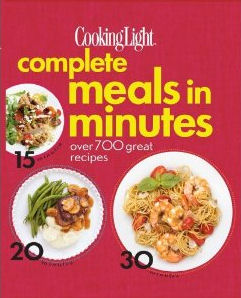 I don’t use cookbooks as recipe books directly in the kitchen. By that I mean that it’s rare that I would ever have a cookbook sitting on the kitchen counter, open to a page, with, likely, something holding down each side of the book so it stayed open while I refer to it back and forth. It’s just not the way I cook, but that gets back to what I do for a living and how I approach it. So it took me a moment to realize that the design of this book as a ring binder had multiple positive things about it as opposed to just taking up extra space over a normally bound book. You can open it and the pages lay flat, you can remove a single page and just have that in the kitchen with you, you can add to it with additional pages if you want, though the last, with 700+ recipes already in the binder, might be a bit of overstuffing. It’s eminently practical.
I don’t use cookbooks as recipe books directly in the kitchen. By that I mean that it’s rare that I would ever have a cookbook sitting on the kitchen counter, open to a page, with, likely, something holding down each side of the book so it stayed open while I refer to it back and forth. It’s just not the way I cook, but that gets back to what I do for a living and how I approach it. So it took me a moment to realize that the design of this book as a ring binder had multiple positive things about it as opposed to just taking up extra space over a normally bound book. You can open it and the pages lay flat, you can remove a single page and just have that in the kitchen with you, you can add to it with additional pages if you want, though the last, with 700+ recipes already in the binder, might be a bit of overstuffing. It’s eminently practical.
Cooking Light: complete meals in minutes is a straightforward recipe book. There’s no text, no prose, no reasons given for any of the recipes. In the context of the magazine there would be reasons given for certain choices, here the assumption is, just trust us, we’ve done the work. And that’s fine. It’s like the laboratory workbook that accompanies the textbook – when you’re in the lab, in this case the kitchen, you don’t need all the extraneous detail. A bit is provided – at the bottom of each recipe is a nutritional analysis of the key things people on a healthy eating kick might be concerned about – calories, fat, protein and carbohydrate content, cholesterol, iron, sodium….
As to the implied purpose of the book, it’s hard to say – “complete meals” are certainly possible out of this book, it covers everything from appetizers to desserts – but what was missing for me were any kind of suggestions like “hey, if you’re making this here on page 273, it goes really well with such and such on page 419.” (Those are random numbers, I don’t necessarily think that you should pair Country Captain Chicken and Grilled Nectarines with Blue Cheese.) You still have to do the menu planning yourself and figure out what you already have around the house and what you need to buy. The recipes are well thought out, easy to follow, and each includes an estimation of how much time it will take to complete them, the “in minutes” part of the subtitle, and they’re pretty accurate – if you decide to go the route of fresh vegetables rather than frozen in some, you’ll add in the few minutes to prepare them, that’s about it.
I tried out a good handful of the recipes, more or less selected at random and all turned out tasty. None was complicated to make. Here and there I have some quibbles about the choices of ingredients – for example, Chicken Paprikash, a favorite dish, is traditionally made with sour cream – what was behind the decision to use whipping cream in the recipe which not only takes away that nice tartness, but doesn’t lower the calories, fat or cholesterol in the dish? Why not light cream, or half and half, or better yet, yogurt? No doubt there was some sort of explanation in the original magazine article, but it isn’t here in the book. And a few things are probably well-known to the average norteamericano homemaker but that I haven’t a clue what they contain – “1 16-ounce package frozen bell pepper stir-fry” – is that just bell peppers? Does that have other stuff in the mix? What is actually in a “24-ounce package refrigerated sour cream and chives mashed potatoes”? I didn’t even know they made such a thing and really wish I didn’t now – and of course, the pushing of particular brands – I assume they’re advertisers – is a little annoying, and probably irrelevant to anyone outside of the U.S.
Overall, if you’re looking for a good, solid recipe book with lots of quick (I think every dish is 30 minutes or less) and easy to make dishes that are healthier than that frozen pizza (really? you have one of those in your freezer?) or snagging takeout from some fast food joint, this is a great choice.
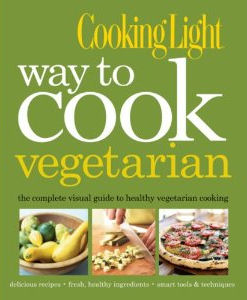 The second book from the same publishers I both like more and less than the first. The book itself – Cooking Light: way to cook vegetarian is a straightforward hardcover. Now that I’m enamored of the ring binder that is the first book, this one loses points, but only in comparison. On the other hand, it’s not just a recipe book. It’s a book to sit down and read, because it’s got some good material in there – so it gets those points back.
The second book from the same publishers I both like more and less than the first. The book itself – Cooking Light: way to cook vegetarian is a straightforward hardcover. Now that I’m enamored of the ring binder that is the first book, this one loses points, but only in comparison. On the other hand, it’s not just a recipe book. It’s a book to sit down and read, because it’s got some good material in there – so it gets those points back.
Many of the same things could be said about the recipes that are in the book – the ease, the frozen, canned and jarred thing, the advertiser pimping (do I really want to know what “1 12-ounce package meatless fat-free crumbles” are?). The recipes here are more of a mix, some simple and some more complicated, and they don’t have that helpful “in minutes” part for the harried homemaker. Many of them require a bit more planning, but it’s all well spelled out. Visually, it’s a quite beautiful book, with not just great photos of the dishes, but also step-by-step how to sections on various topics like making ricotta, preparing certain specialty vegetables and making omelets; sidebars that explain the differences between grains, tofus, tempehs, and many of the other things that a budding vegetarian might want to read about. It’s like a really cool, well illustrated “for Dummies” book. But better.
It falls down in a couple of places. I found myself searching the index with no luck for many of our current fall vegetables – cauliflower, brussels sprouts, parsnips and cabbage, somehow or other not one of these make it into the book, or at least aren’t listed – yet at the same time, it delves into things like celeriac, lemongrass, jicama and quinoa, with gusto. Even broccoli gets short shrift with only three recipes, two of which are variations on “in cheese sauce”. The focus seems to be on grain based dishes – whether the grains themselves in one guise or another, or things like pastas, sandwiches (or other similar dishes like bruschettas and pizzas), and a whole lotta stir-fries on rice. And why tout seitan as a great protein alternative and then only offer one page and two recipes using it while tofu warrants a 25 page section and tempeh, which is probably harder to find, a 10 pager with lots of recipe options each?
Although the index parses out the vegan recipes, and they’re marked in the text as well, there’s no explanation of the differences between vegetarian eating and a vegan lifestyle, or even that the latter isn’t, generally, just a diet. And even in some of the vegan marked dishes they use honey, which for the majority of vegans is a no-no.
Overall – visually a great book, and well, well worth it for the techniques and sidebars – some of which will likely clear up all sorts of mysteries for the kitchen novice, particularly someone exploring a vegetarian alternative, or who just wants to expand their repertoire of vegetable recipes. It’s not, as the subtitle asserts, “the complete visual guide to healthy vegetarian & vegan cooking” – it’s far from complete, but it would be an excellent library addition to anyone with those goals in mind.
 I was mucking about in one of our local English language bookstores, just looking for something casual to read (why, I don’t know – I have more books piled up and also loaded on my e-reader than I’ll likely ever get to) when I stumbled across a few books from Diane Mott Davidson. She has written what turned out to be a fifteen volume series (with more on the way I gather) of cozy mysteries – you might remember… no, you won’t… that a little over five years ago I reviewed a trio of such fare… if you’re interested,
I was mucking about in one of our local English language bookstores, just looking for something casual to read (why, I don’t know – I have more books piled up and also loaded on my e-reader than I’ll likely ever get to) when I stumbled across a few books from Diane Mott Davidson. She has written what turned out to be a fifteen volume series (with more on the way I gather) of cozy mysteries – you might remember… no, you won’t… that a little over five years ago I reviewed a trio of such fare… if you’re interested, 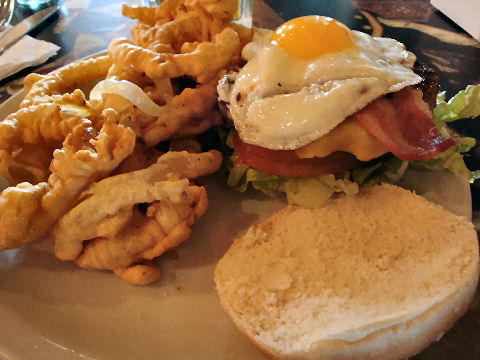
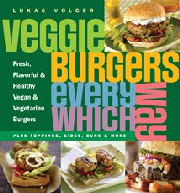 Not long ago I came across this little gem, Veggie Burgers every which way, by Lukas Volger, who writes the
Not long ago I came across this little gem, Veggie Burgers every which way, by Lukas Volger, who writes the 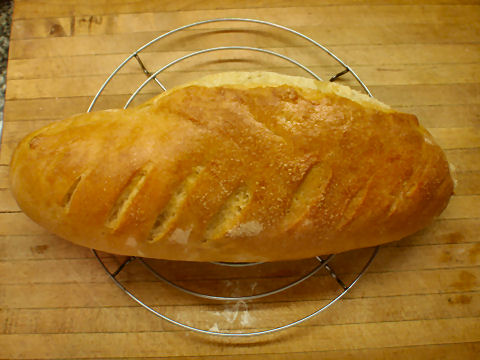
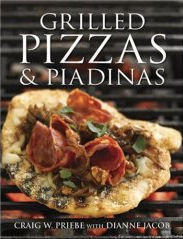 Buenos Aires – The quote above comes from one of my relatively new favorite little cookbooks. It’s a great, step-by-step guide to making various types of grilled pizzas and, those wonderful fold over pizza sandwiches, the piadinas. It’s well-written, to the point, doesn’t make any outlandish claims to having invented the genre as, well, one in particular has, and best of all, is really nicely illustrated with superb photographs that give you a solid sense of what you can expect. It also covers the gamut from basics to elaborate, from savory to sweet, and from pizza for one to party planning. And maybe the really best thing of all, they make it easy. What more can you ask from a cookbook?
Buenos Aires – The quote above comes from one of my relatively new favorite little cookbooks. It’s a great, step-by-step guide to making various types of grilled pizzas and, those wonderful fold over pizza sandwiches, the piadinas. It’s well-written, to the point, doesn’t make any outlandish claims to having invented the genre as, well, one in particular has, and best of all, is really nicely illustrated with superb photographs that give you a solid sense of what you can expect. It also covers the gamut from basics to elaborate, from savory to sweet, and from pizza for one to party planning. And maybe the really best thing of all, they make it easy. What more can you ask from a cookbook?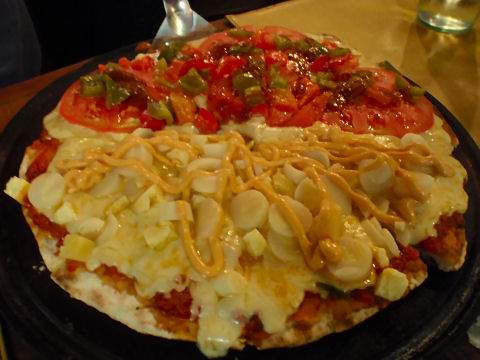
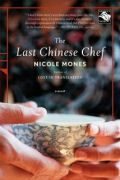 First up was the reading for total pleasure. I’d run across references to the book The Last Chinese Chef by Nicole Mones, in various spots on the internet – I think I even used a quote from the book as part of one of my posts not that long ago. It sounded completely intriguing, and then a couple of food biz friends recommended it highly. I do the same. By turns a romance, a food book (and I’m already tracking down recipes to try out, some of which the author provides on her website), a personal narrative from several perspectives, and even a touch of suspense, the book is well crafted, an enjoyable read – not a completely light, easy reading book, but not overly intellectual either. Initially I thought it was a little… fluffy… when it started out – the narrative part, at times, does have a sort of harlequin romance character to it – but it quickly becomes clear this is intentional and meant to reflect the proponent’s personality more than anything else – sections that are narrated from the point of view of other characters take on an entirely different style, tone and quality of writing – it’s clear that Ms. Mones can write well, and chooses simply to use a lighter style of writing for the first character introduced. I never read her other book for which she is famous – Lost in Translation – I hated the movie, but then, never judge a book by its movie… you know? Highly recommended reading material for anyone who likes food and cooking.
First up was the reading for total pleasure. I’d run across references to the book The Last Chinese Chef by Nicole Mones, in various spots on the internet – I think I even used a quote from the book as part of one of my posts not that long ago. It sounded completely intriguing, and then a couple of food biz friends recommended it highly. I do the same. By turns a romance, a food book (and I’m already tracking down recipes to try out, some of which the author provides on her website), a personal narrative from several perspectives, and even a touch of suspense, the book is well crafted, an enjoyable read – not a completely light, easy reading book, but not overly intellectual either. Initially I thought it was a little… fluffy… when it started out – the narrative part, at times, does have a sort of harlequin romance character to it – but it quickly becomes clear this is intentional and meant to reflect the proponent’s personality more than anything else – sections that are narrated from the point of view of other characters take on an entirely different style, tone and quality of writing – it’s clear that Ms. Mones can write well, and chooses simply to use a lighter style of writing for the first character introduced. I never read her other book for which she is famous – Lost in Translation – I hated the movie, but then, never judge a book by its movie… you know? Highly recommended reading material for anyone who likes food and cooking.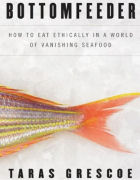 My other book was a bit more on the serious side. Bottomfeeder: How to eat ethically in a world of vanishing seafood by Taras Grescoe, has been sitting on my reading stack for months now. Like other books of the genre – the more prominent recent ones being what seems a slew by Michael Pollan, it’s a grim picture of what we’ve done to our food supply, what’s going to happen if we continue the way we are, and suggestions for what we can do about it. Unlike Pollan, Grescoe tackles the theme with a bit of a sense of humor, and a bit of self-deprecation – in his quest for information, detail, and some of the whys and wherefores, he finds himself, by conscious choice, eating his way through a selection of seafood that he already knows, based on his thesis, he oughtn’t to be. He excuses himself with “this will be the last time I ever…” sort of reasoning, which doesn’t really excuse it, but is the same reasoning that most of us use when confronted with ideas of the sort that we have some responsibility for the planet and our bodies in our choices of what we eat. The old “it’s already been caught, so if I don’t eat it, someone else will or it will go to waste” is a specious argument – lowering demand, in the long run, can only help towards a change in the approach of restaurants’, fishmongers’ and fisheries’ attitudes. One bite at a time. The book does not end on any sort of upbeat or hopeful note – Grescoe seems to have concluded that it’s unlikely change will come in time – one hopes he doesn’t actually believe that, as, if so, the only reason for having written the book would have been self-promotion and greed – and I don’t think that’s the case, I think he just doesn’t sum things up in a way that is as likely to lead towards change as he could have – he’s presented his case, he’s basically stated what he’s going to do about it, and he leaves it up to the individual reader to decide what he or she is going to do. The case statement was powerful, the summation to the jury of his peers could have used more punch. Still, overall it’s well worth a read – not to mention taking some action.
My other book was a bit more on the serious side. Bottomfeeder: How to eat ethically in a world of vanishing seafood by Taras Grescoe, has been sitting on my reading stack for months now. Like other books of the genre – the more prominent recent ones being what seems a slew by Michael Pollan, it’s a grim picture of what we’ve done to our food supply, what’s going to happen if we continue the way we are, and suggestions for what we can do about it. Unlike Pollan, Grescoe tackles the theme with a bit of a sense of humor, and a bit of self-deprecation – in his quest for information, detail, and some of the whys and wherefores, he finds himself, by conscious choice, eating his way through a selection of seafood that he already knows, based on his thesis, he oughtn’t to be. He excuses himself with “this will be the last time I ever…” sort of reasoning, which doesn’t really excuse it, but is the same reasoning that most of us use when confronted with ideas of the sort that we have some responsibility for the planet and our bodies in our choices of what we eat. The old “it’s already been caught, so if I don’t eat it, someone else will or it will go to waste” is a specious argument – lowering demand, in the long run, can only help towards a change in the approach of restaurants’, fishmongers’ and fisheries’ attitudes. One bite at a time. The book does not end on any sort of upbeat or hopeful note – Grescoe seems to have concluded that it’s unlikely change will come in time – one hopes he doesn’t actually believe that, as, if so, the only reason for having written the book would have been self-promotion and greed – and I don’t think that’s the case, I think he just doesn’t sum things up in a way that is as likely to lead towards change as he could have – he’s presented his case, he’s basically stated what he’s going to do about it, and he leaves it up to the individual reader to decide what he or she is going to do. The case statement was powerful, the summation to the jury of his peers could have used more punch. Still, overall it’s well worth a read – not to mention taking some action.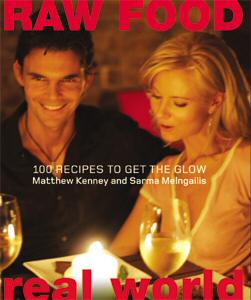 Buenos Aires – Okay, pet peeve in regard to book titles. Yes, book titles. If you have a catchy title, if you, or your editor or publisher, gave it some thought, why do you need a subtitle explaining what your book is all about? Is it really that difficult, with a book called Raw Food Real World for anyone to grasp the subject matter at hand? Does it need 100 Recipes to Get the Glow? Which, by the way, comes across to me at least as less explicative than the title – sure, I get the 100 recipes part, but “get the glow”?
Buenos Aires – Okay, pet peeve in regard to book titles. Yes, book titles. If you have a catchy title, if you, or your editor or publisher, gave it some thought, why do you need a subtitle explaining what your book is all about? Is it really that difficult, with a book called Raw Food Real World for anyone to grasp the subject matter at hand? Does it need 100 Recipes to Get the Glow? Which, by the way, comes across to me at least as less explicative than the title – sure, I get the 100 recipes part, but “get the glow”?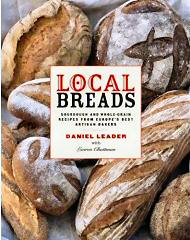 Buenos Aires – Though it was published last year, I just got around to reading through Daniel Leader’s Local Breads. I was particularly interested in this bread baking book because it focuses on sourdough breads from a number of traditional European cultures, and it’s a topic, good sourdough bread, that is, that comes up regularly in expat conversation here. A friend of mine recently went back to the U.S. to visit family and agreed to bring back a couple of different books that I’d wanted, so here was my opportunity. Daniel Leader is well-known for his award winning book Bread Alone that came out in the mid-90s – a solid introduction to the world of bread baking. This new book has gotten rave reviews, with only minimal criticism for at times being a bit technical and dense. I have to admit, I didn’t find it that way, but then, I’m kind of used to reading books of that sort.
Buenos Aires – Though it was published last year, I just got around to reading through Daniel Leader’s Local Breads. I was particularly interested in this bread baking book because it focuses on sourdough breads from a number of traditional European cultures, and it’s a topic, good sourdough bread, that is, that comes up regularly in expat conversation here. A friend of mine recently went back to the U.S. to visit family and agreed to bring back a couple of different books that I’d wanted, so here was my opportunity. Daniel Leader is well-known for his award winning book Bread Alone that came out in the mid-90s – a solid introduction to the world of bread baking. This new book has gotten rave reviews, with only minimal criticism for at times being a bit technical and dense. I have to admit, I didn’t find it that way, but then, I’m kind of used to reading books of that sort. 